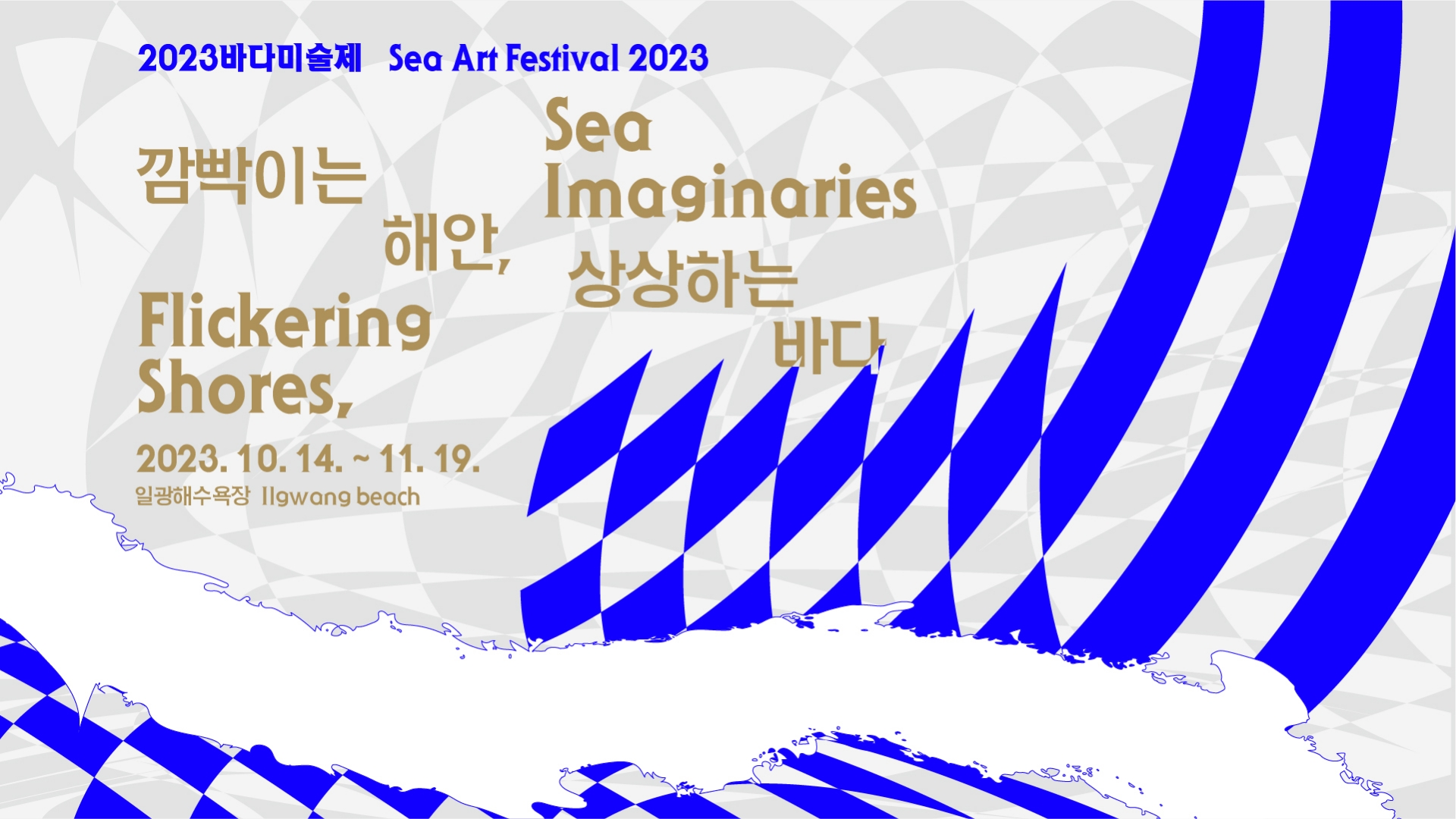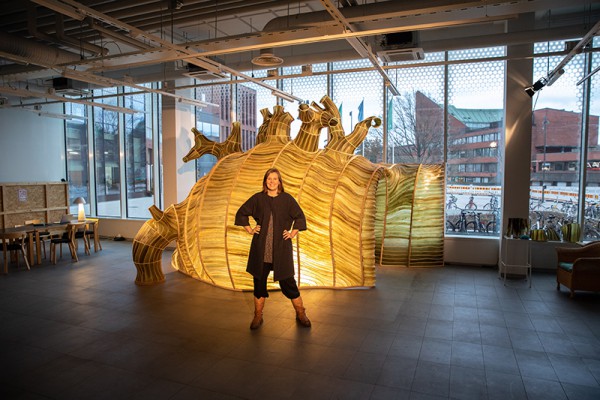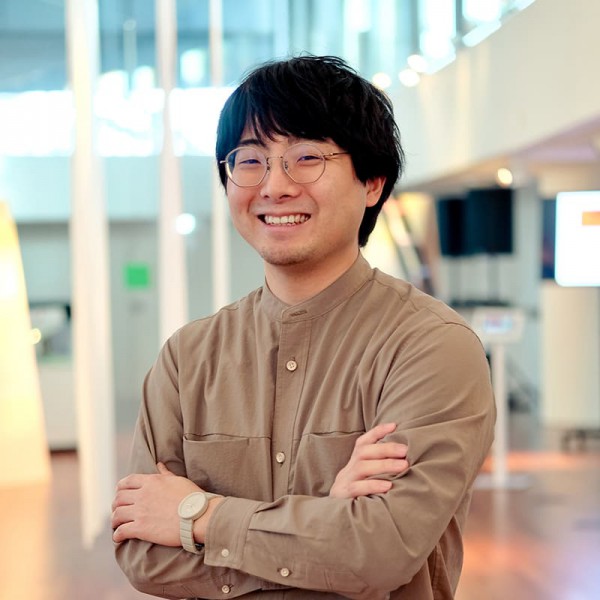


Flickering Shores, Sea Imaginaries, this year’s edition of the Sea Art Festival, is inviting us to rethink our relationship with the sea, referring to the beauty but at the same time, the fragility of our shores, and exploring alternative frameworks and visions for engaging with the ocean and marine environments.
The sea is deeply embedded in our lives and capitalist society, a vital source for our survival, but also a vast industry we exploit for food, medicines, energy, minerals, trading, travel and so on. But increased human activity, from extensive cruise tourism, shipping and overfishing to nuclear testing, pollution and deep-sea mining have been plaguing the sea, having a huge impact on marine ecosystems and habitats.

Instead of viewing the sea from the coast as a divided and abstract surface for moving around commodities, Flickering Shores, Sea Imaginaries reminds us that we are part of this body of water. This year's Sea Art Festival aims to explore new relationships with the sea and its ecologies, enabling spaces for cooperation, collective visions and synergies as a call to resistance and restoration.

Robertina Šebjanič is an internationally exhibited artist/researcher whose work explores the bio-chemical, (geo)political, and cultural realities of aquatic environments and the impact of humanity on other organisms. Her projects call for developing empathetic strategies aimed at recognizing the Other. In her analysis of the Anthropocene and its theoretical framework, the artist uses the terms “aquatocene” and “aquaforming” to refer to the human impact on aquatic environments. Her works have received awards and nominations at the Prix Ars Electronica, Starts Prize, Falling Walls, and RE:Humanism.
VIEW MORE 
Lab C works with the keywords “plant,” “region,” and “art.” Lab C, a collaborative duo made up of Mira Park (Forest Curator) and Changpa (Art Director), studies the experience they had in one particular place in the past after carefully observing one single part of Busan’s mountains and surrounding sea over a long period of time. They have presented curatorial programs such as Time to Ramble, Time to Ramble: The Sea, and Cosmos in One Square Meter by curating viewers’ experiences.
VIEW MORE 
Rebecca Moss’s artistic practice explores notions of absurdity, precarity, and instability, and takes a variety of forms across different media. She is drawn to slapstick for its sense of reciprocity inasmuch as our surroundings can act back upon us because we are not always in control. She is inspired by slapstick performances and creates scenarios that stage interactions between human gestures and elemental forces, where an idea or gesture is humorously played out to the point of futility, chaos, or crisis.
VIEW MORE 
Emma Critchley is an artist who uses water as a formal material property in a range of media, including film, photography, sound, installation, and dance. Her work explores the underwater environment as a political, philosophical, and environmental space, and has been shown extensively nationally and internationally in galleries and institutions, including the official Italian pavilion of the Venice Architecture Biennale 2021. Her current project, Soundings, explores how film, sound, and dance might be used to connect us with the deep ocean to help foster the meaningful connection needed to inspire care for the deep sea and its ecosystems.
VIEW MORE 


Who governs or makes the rules in international, globalized waters and what are the implications for seafarers and labor conditions?
In August 2016, Rebecca Moss was selected for the 23 Days at Sea artist residency program, run by Access Gallery in Vancouver. Traveling on the Hanjin Geneva container ship from Tokyo to Shanghai, Moss planned to cross the Pacific Ocean and arrive in Shanghai 23 days later. However, one week into the residency, the shipping company Hanjin was declared bankrupt, meaning that the individuals and cargo were stranded at sea on a ship which was unable to pay to get into any docks. Ports around the world barred the shipping company’s vessels from docking fearing that the bankrupt company will be unable to pay for port and service fees.
Moss, the only artist on board, two passengers and the crew of Geneva, dropped anchor 13 km from the coast of Japan, in international waters, and waited for over a fortnight for further instruction.
Maritime transport is still the backbone of international trade and the global economy, as over 90% of the world’s goods - including most of the things we consume, from gadgets, electronics and other appliances to fruit - are transported by sea. International Waters is a single channel video work made in response to being stuck at anchor and makes visible the largely unknown, but at the same time ubiquitous world of the global shipping industry. It is also a reminder of the harsh and often unfair working conditions for seafarers. Apart from Geneva, hundreds of other ships in the company’s fleet were also affected, with crew and cargo remaining stranded in the sea for a while.
Rebecca Moss through her work tells the absurd story of the bankruptcy from the perspective of the people on board the stationary ship full of goods and cargo but suddenly without a destination, and combines interviews and news reports from this time.
VIEW MORE 
Climate change can sometimes feel far away and distant in both space and time, but what does it take to pay attention?
THIS IS NOT A GOOD SIGN is an augmented reality (AR) poetry project and site-specific installation by J. R. Carpenter & Tomo Kihara. The web-based augmented reality component of the project uses AR to overlay the user’s surroundings with 3D-modeled signage posing questions about past and present climatic conditions. ‘Why is the sky so blue?’, ‘Has it always rained?’ These signs call attention to the small changes in the climate already occurring all around us, inviting playful responses.
THIS IS NOT A GOOD SIGN was originally commissioned by Now Play This, a festival of experimental play design, in 2021. New signs have since been created responding to the specific themes of exhibitions at the Digital Design Weekend at the Victoria & Albert Museum in London, and the Everything Will be Fine exhibition in Berlin. ‘Time rivers under us.’, ‘It’s fine.’
For the Sea Art Festival, Carpenter & Kihara have created five new physical signs, with texts in Korean and English, which respond directly to the environmental conditions of Ilgwang Beach. Together, these signs form a poem:
sea rises early.
air falls heavily.
here wind lives.
swift ground shifts.
salt seeps into our dreams.
Experience these signs in person on Ilgwang Beach, or through the web-based AR app (https://not-a-good-sign.com/) anywhere in the world.
VIEW MORE 
While our oceans already face a huge amount of stress from climate change, plastic pollution, oil spills and over fishing, how can proposals for sea floating dwellings be sustainable or non-threatening to marine ecosystems?
Seasteading, the concept of creating dwellings floating at sea, colonizing oceans and bypassing territories controlled by governments, has been around for a long time. Floating structures anchored in international waters, beyond the "territorial sea" of any country, have included refitted oil platforms, modified cruise ships, or custom-built floating islands and structures to name a few.
Jacob Hurwitz-Goodman and Daniel Keller’s film The Seasteaders documents the first Seasteading conference in Tahiti, talking with Seasteading evangelists like controversial author Joe Quirk and Seasteading Institute executive director Randolph Hencken to get firsthand accounts of the Seasteader’s beliefs and visions for an aquatic future. While much remains to be worked out, not least of all the fundamental problem of the place of “shesteaders,” the Seasteaders hope they can float on changing tides as they colonize the world’s waters.
Founded in 2008 by former Google software engineer Patri Friedman with financial backing by PayPal founder Peter Thiel, the Seasteading Institute envisions a fluid world, where governments are selected in an open market and climate change can be “hacked.” Seeing rule by the majority as ineffective and oppressive, the Seasteaders propose a libertarian future of floating micro-governments, where user-citizens can detach and rejoin at will and law looks less like constitutions and more like software. To implement their plan for a nautical future, the Seasteaders have begun working with the government of French Polynesia to build the first floating islands in a special economic zone off the coast of Tahiti, after facing large-scale public opposition in Honduras.
Seasteading evangelists, in a similar way to Silicon Valley techno solutionists, are presenting the society as a system that can be modified, managed or controlled. A group of entrepreneurs proposes to create new markets and worlds that fit their needs for a rules-free society. But while these initiatives present floating societies as solutions to housing needs, environmental challenges or a way to escape badly governed nations, how can we know for sure that these sea structures are more than tax avoidance bubbles or extravagant retreats for the rich?
VIEW MORE 
Echo, Filled in the Sea is an installation in the shape of a net that spans 8 meters in width and 4 meters height. The net is created based on stories of local residents. It is intricately woven with pearls and beads. The round and luminous pearls symbolize precious moments, emotions, and memories. Additionally, the arrangement of pearls, along with elongated beads, form Morse code messages, encoded text characters in sequences of signal durations. Each pulse of the Morse code represents a message written for someone close, who can no longer be here — a message for someone from the past and long gone.
The net is suspended above the beach, swaying freely at the boundary between the sea and the sky. It reaches out toward the distant sea, a symbol of longing, as delicate strands of the net are intertwined like outstretched hands.
The hidden voices within the encrypted messages in the delicate threads of the net yearn to reach the souls of those who are no longer by our side, while reminding us that the sea is a place of hardship and precariousness for many people. As we gaze upon the transparent glow of pearls and beads, we offer a prayer that they might echo back to us.
VIEW MORE 
Have you ever looked closely at a grain of sand? Imagined it as a small part of the world, with its very own story to tell?
The journey of a grain of sand has been guided by water, wind, and ice over time. Just like people, each grain has its own character and tells a unique story of the land and history. It is also one of the most important materials in our lives. Without it, we would have no glass, no computer chips, and no buildings.
To See a World in a Grain of Sand is a project that maps the Earth through small sand samples contributed by people worldwide, revealing hidden narratives embedded in glass fused from 'wild' sands. From a hot and dry desert to a cold and snowy mountain; a skyscraper in a bustling city to an archaeological ruin; an invisible political border to a vast and open landscape; an excavated gold mine to the bottom of an ancient seabed; or a place of civil unrest to a serene holiday island. When these geographical diversities become visible, it becomes clear that sand carries not only ecological significance but powerful social and political histories.
Specially curated for the Sea Art Festival, Atelier NL delves into South Korea's history. In the intricate tapestry of our planet's story, sand stands as a silent witness to the passage of time, shaped over billions of years. Yet, this seemingly abundant resource faces an urgent global crisis - a scarcity driven by insatiable demand.
Every year, we remove billions of tons of sand from beaches, rivers, oceans, and quarries across the planet, locking it away in infrastructure and technology. This makes sand one of the most quickly disappearing natural resources in the world, so much that there is now a global sand scarcity.
Amidst these global challenges, South Korea stands at a crossroads. As a rapidly growing nation, it must strike a delicate balance between ambitious development plans and safeguarding the environment. Busan's skyline of towering skyscrapers showcases the magnitude of sand's role in construction. It serves as a poignant reminder that sustainable sand management is crucial to support the city's growth while preserving the natural beauty that surrounds it. This installation invites you to see the world anew, where the humble grain of sand carries stories of our past, present, and future.
The collected sands, mainly gathered by Bora Hong, a multidisciplinary designer from Seoul now residing in Chiang Mai, are visualized on the map of South Korea. During her 10-day road trip, she collected sands from diverse beaches along the coastline. Exploring rivers and little streams led her to unexpectedly beautiful and tranquil locations. Bora's involvement with "aworldofsand.com" allowed her to uncover sands with profound stories and memories reflecting the country's rich cultural heritage and natural beauty.
Alongside Bora's captivating journey, Atelier NL categorized each story and place into six themes: history, migration, meaning, ecology, delay, and scarcity, providing a unique perspective on the sands' significance and the memories they evoke.
VIEW MORE 

포레스트 커리큘럼은 남아시아와 동남아시아를 잇는 삼림지대 조미아의 자연문화를 통한 인류세 비평을 주로 연구합니다. 작품 유랑하는 베스티아리는 이 연구의 일환으로, 비인간적 존재들이 근대 국민국가에 내재된 계급적이고 세습적인 폭력과 그에 따른 잔재들에 어떻게 대항해왔는지를 보여주는 작품입니다. 좌중을 압도하는 듯한 거대한 깃발들은 위태롭고도 불안하게 스스로를 지탱하고 있는 듯 보입니다. 깃발에는 벤조인이나 아편부터 동아시아 신화에 등장하는 동물들까지 비인간 존재들을 상징하는 대상들이 그려져 있습니다. 각 깃발들은 비인간적 존재들의 대표자로서 모두가 한데 결합되어 아상블라주 그 자체를 표상합니다. 또한 깃발들과 함께 설치된 사운드 작품은 방콕과 파주에서 채집된 고음역대의 풀벌레 소리, 인도네시아의 경주용 비둘기들의 소리, 지방정부 선거를 앞두고 재정 부패를 유지하기 위한 수단으로 쓰이는 불필요한 공사에서 발생하는 소음, 그리고 위의 소리들을 찾아가는데 사용된 질문들과 조건들을 읽어 내려가는 내레이션으로 이루어져 있습니다.




